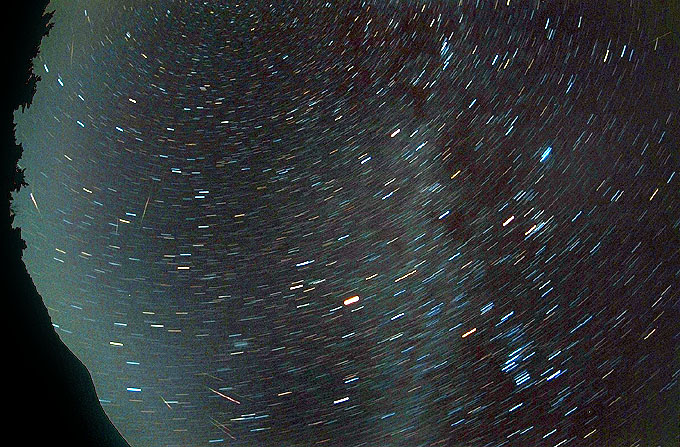 18 November 2001, 17.00-17.10 UT, Fish-eye f=16mm f/2.8. Film Superia 1600 ISO. We start our observations below the summit of Takachiho-No-Mine Volcano (lower left), at 970 m a.s.l., with already some Leonids in the sky. | 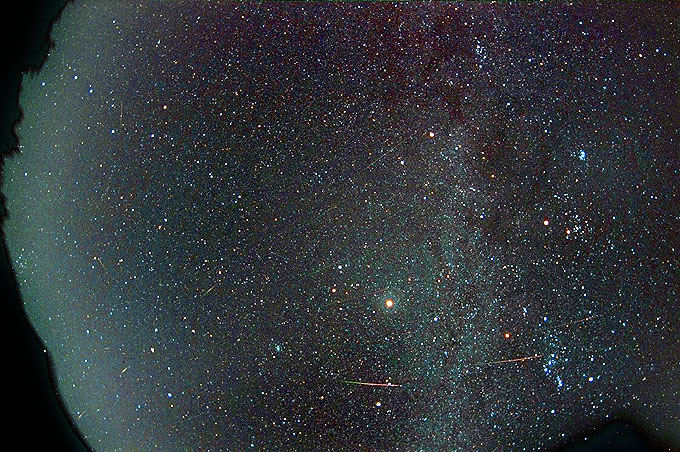 18 November 2001, 18.00-18.10 UT, Fish-eye f=16mm f/2.8. Film Superia 1600 ISO. This exposure was taken driving on the stars, so enhancing the stunning Winter Milky Way dominating this superb dark night sky. | 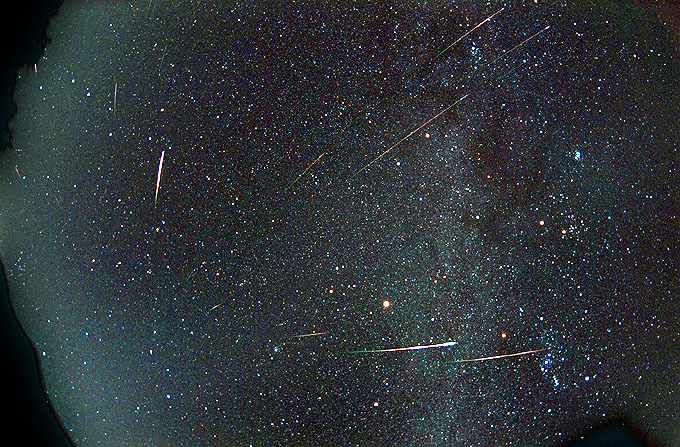 18 November 2001, 18.10-18.20 UT, Fish-eye f=16mm f/2.8. Film Superia 1600 ISO. At the shower peak, over thirty fireballs fill all the sky from Leo to Ursa Maior (upper left), Aries (upper right) and Orion (lower right). | 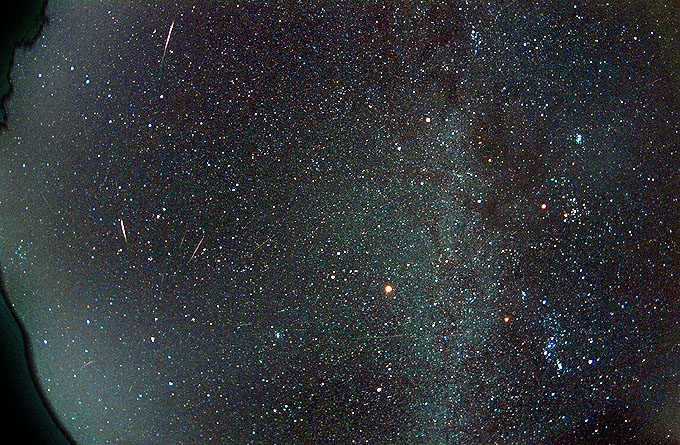 18 November 2001, 18.20-18.30 UT, Fish-eye f=16mm f/2.8. Film Superia 1600 ISO. Just after the shower peak, a few fireballs explode closer to Leo, rising over Takachiho-No-Mine Volcano crater. |
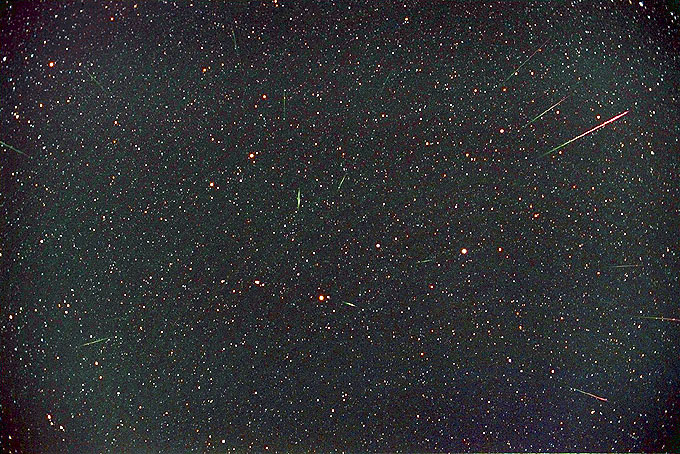 18 November 2001, 17.50-18.00 UT, f=50mm f/1.2 stopped at f/2. Film Superia 1600 ISO. This lens with longer focal length allows us to glimpse fainter meteors close to the radiant in Leo's Head. | 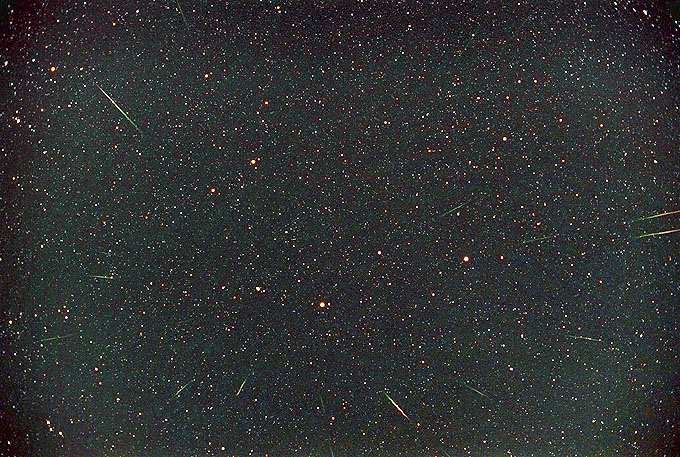 18 November 2001, 18.00-18.10 UT, f=50mm f/1.2 stopped at f/2. Film Superia 1600 ISO. Around the peak of the shower, more than ten meteors fill the sky around Leo's Head every ten minutes. | 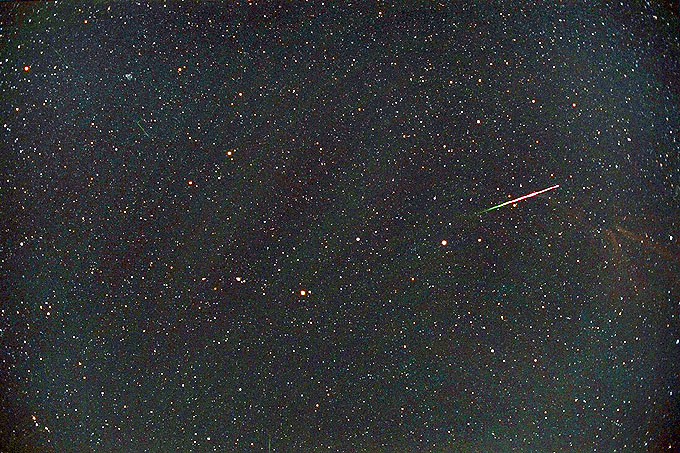 18 November 2001, 18.30-18.40 UT, f=50mm f/1.2 stopped at f/2. Film Superia 1600 ISO. A moon-like fireball explodes below Regulus and releases a yellow stria drifted to the south by stratosphere winds during the exposure. | 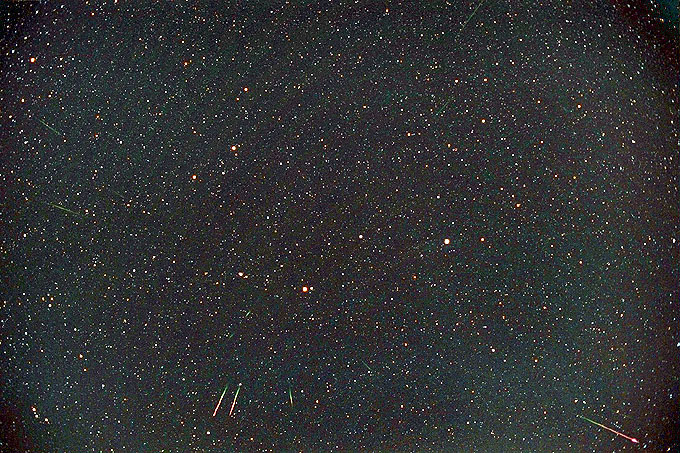 18 November 2001, 18.40-18.50 UT, f=50mm f/1.2 stopped at f/2. Film Superia 1600 ISO. Towards the end of the shower, the last meteors enter our atmosphere east of Leo's Head. All photos of this row have North on the left. |